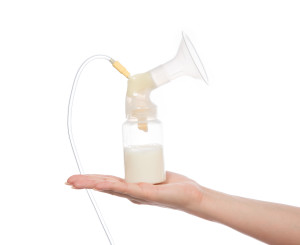
Most people will tell you that breastfeeding does not only provide the newborn baby with necessary nutrients, but that it is also a great way for a mother to bond with her newborn—as well as an important way for the whole family to come together. What is not common knowledge, however, is that breast milk contains antibodies that can also be used to improve your overall health—and you don’t need to be a baby for that to happen! In fact, in many places around the world such as the Guangdong Province in China, breast milk is considered a hot commodity. The main reason for this is that it contains antibodies that combat diseases without causing inflammation.
Ear Infections
One of the ways in which breast milk can help treat ear infections is through the baby’s constant motion of sucking, as this relieves the pressure in the ear cavity. Additionally, many mothers report that a few drops of it in the baby’s ear help ease ear infections. This is due to the antibodies that can be found in breast milk. Ergo, it can also be used as a natural remedy for adult ear infections. Three or four drops at the entrance of the ear canal should be enough for this remedy to work.
Eye Infections
The most common eye infection, pinkeye, is treated with probiotic-laden, non-acidic liquids. Breast milk has been proven to be the most effective of those, tested scientifically and not only because mothers have been using it for a long time as a treatment. A couple of drops should be used in addition to the clear eye drops to treat infectious conjunctivitis. Be sure to consult with your doctor before using breast milk as a treatment of any sort.
Breast Milk as Ointment
The antibodies breast milk contains, more specifically IgA, can help prevent germs from growing on skin injuries. Some drops of breast milk can be used to disinfect an area that has a burning or itching cut. Similarly, it can be used as ointment for baby eczema; baby skin can dry easily and cause eczema which can be soothed when applying breast milk on the suffering area.
Breast Milk as Facial Cleanser
Controversial as it may sound, breast milk is a cost-effective solution to treat acne or skin disorders because of the lauric acid it contains. To use it as an acne solution, make sure to dilute it by first applying cold water on your face or acne-infected area; proceed to apply a few drops of breast milk and allow it to air dry. Wipe clean with a wet towel.
As you would do with any suggested home remedies, make sure that you consult your doctor and that you exercise your best judgement according to what your body needs best.
More
 Whether you are a first time mom, or are realizing that each child develops differently, a woman can experience difficulties breastfeeding at any time. Though breastfeeding is a natural process and is one that is best for both you and your baby, do not be frustrated or disappointed if it does not seem to come easily. What follows is a list of six of the most common breastfeeding issues and tips for overcoming each one.
Whether you are a first time mom, or are realizing that each child develops differently, a woman can experience difficulties breastfeeding at any time. Though breastfeeding is a natural process and is one that is best for both you and your baby, do not be frustrated or disappointed if it does not seem to come easily. What follows is a list of six of the most common breastfeeding issues and tips for overcoming each one.
Latching pain – Nipple discomfort is common when a woman first begins to breastfeed, especially for new mothers. If pain lasts more than the first minute after your baby latches, however, check your positioning. The optimal position is for the baby’s mouth to cover more of the areola below your nipple than above. When correctly positioned, baby’s chin and nose should touch your breast with his lips splayed out so that you cannot see your nipple.
Clogged ducts – The ducts of your nipples may clog if your breast milk is not completely draining after nursing. If your ducts are clogged, you may feel a hard lump on your breast, or your breast may be sore to the touch. If you begin to feel feverish and achy, you could have an infection, and should see your doctor. To help your body to clear the blockage, be sure to get enough rest, apply warm compresses to your breasts, and massage them to stimulate milk movement.
Thrush – This is a yeast infection in your baby’s mouth, which can spread to your breasts. Symptoms include itchiness, soreness, and rash. You will need an antifungal medication for both your nipples and your baby’s mouth to treat the infection.
Cracked nipples – If you find that your nipples are producing a bloody discharge during breastfeeding or pumping, know that it will not harm your baby. Cracked nipples could be caused by latching problems, improper breast pumping, dry skin, or thrush. To lower your risk for developing cracked nipples, check your baby’s positioning. You may also want to try breastfeeding more frequently but for shorter periods of time. Until your skin heals, treat your skin with clean water or an over-the-counter lanolin cream made especially for nursing mothers.
High milk supply – Also known as engorgement, having a high supply of breast milk could make it difficult for baby to latch to the breast. To help your baby latch, first try hand-expressing some milk to begin the flow and soften the breast. Breastfeeding more frequently may also help keep milk levels in check.
Mastitis – This bacterial infection in your breasts can be caused by cracked skin, clogged ducts, or engorgement. Mastitis causes pain and flu-like symptoms, including fever. Antibiotics will be needed to treat the infection. Also try applying a hot compress to the breast and empty your milk supply frequently.
If you experience any of these conditions or issues while breastfeeding, speak to your OBGYN. Breastfeeding should offer an important emotional bonding opportunity for you and your baby and should not be a cause of stress, discomfort, or health risk. For more on this topic, please visit the breastfeeding section on the patient education part of our website or check out these breastfeeding resources in Western New York.
More


